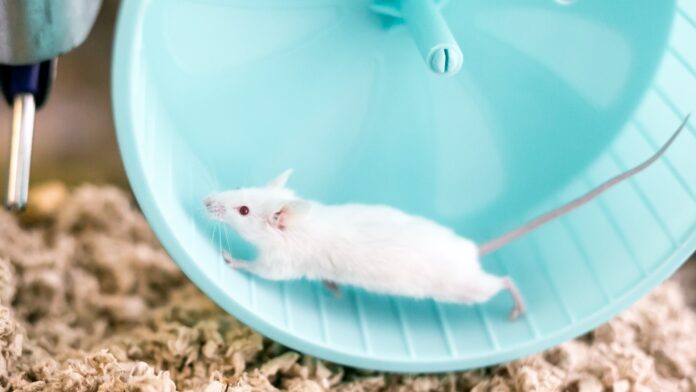For years, scientists have known that exercise is fantastic for your brain. It improves memory, thinking skills, and even protects against neurodegenerative diseases like Alzheimer’s. But the exact “how” of this brain-boosting effect has remained a bit of a mystery.
While better blood flow, reduced stress, and a stronger heart are all linked to exercise, they didn’t fully explain how physical activity directly impacts the billions of neurons in our brains. Now, exciting new research using mice suggests that the answer may lie in tiny packages called extracellular vesicles that travel through the bloodstream.
Think of these vesicles as molecular couriers carrying important cargo: proteins and genetic material. In a study published in Brain Research, scientists found that when young adult mice ran on wheels for four weeks, their blood became teeming with these vesicles, particularly those containing molecules linked to antioxidant defenses and neurogenesis (the birth of new brain cells).
When researchers injected these “exercise-loaded” vesicles into sedentary mice, a remarkable thing happened: the sedentary mice grew about 50% more new brain cells in the hippocampus, a region crucial for learning and memory. Importantly, most of these new cells matured into functioning neurons.
Meghan Connolly, lead author of the study, was surprised by how specific this effect was. Vesicles from running mice triggered neuron growth while those from couch-potato mice did not. While it’s unclear if the vesicles directly entered the brain or acted indirectly through other signals, the presence of these neurogenesis-promoting proteins is a strong clue.
This increase in new neurons is promising but may only be truly beneficial if they survive and integrate into existing brain circuits. “These newborn neurons still need weeks to grow and wire themselves into the brain’s existing circuits,” explains Paul Lucassen, a neuroscientist who wasn’t involved in the study. Only then can they contribute meaningfully to learning and memory.
Further research is needed to confirm whether these vesicles could restore neurogenesis and improve memory in animal models of brain diseases. This exciting avenue is already being explored by some researchers.
In another study published in iScience, scientists used a mouse model of Alzheimer’s disease. They found that exercised mice showed less amyloid buildup (a hallmark of Alzheimer’s) in the cortex and had better metabolic function and memory compared to sedentary mice. Intriguingly, when vesicles from exercised mice were delivered through the nose to sedentary Alzheimer’s-model animals, they replicated some of these metabolic benefits but didn’t significantly improve memory or reduce amyloid levels.
The researchers speculate that the method of delivery (involving light anesthesia) might have impacted memory outcomes. Currently, follow-up experiments are underway with human participants, comparing vesicles traveling to and from the brain during exercise. Early results hint that vesicles headed towards the brain may be enriched with proteins known to influence cognition.
While these tiny vesicle messengers hold great promise, it’s important to remember that exercise likely influences the brain through multiple interconnected pathways. Joram Mul, an exercise neurobiologist, puts it perfectly: “It’s a whole-body effect, not a single factor explaining all but a symphony of multiple factors and processes playing in perfect harmony.” Exercise sets off a cascade of positive changes throughout our bodies – muscles, nerves, even gut microbes – ultimately benefiting the brain.


































